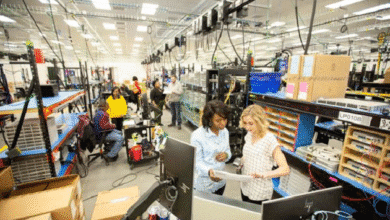What Does 5G Stand For in 5G Technology?

what does 5g stands for in 5g technology
In recent years, the rollout of 5G technology has been a hot topic in the tech world, promising faster internet speeds and more reliable connectivity. But what exactly does “5G” stand for, and how does it differ from previous generations of mobile networks? This article delves into the meaning of 5G, its technological advancements, and its impact on various industries.
Understanding the Meaning of 5G
The term “5G” stands for “fifth generation,” referring to the fifth generation of wireless mobile network technology. Each generation of mobile networks has brought significant improvements in terms of speed, capacity, and capabilities. Here’s a brief overview of the fideleturf evolution of mobile network generations:
- 1G (First Generation): Introduced in the 1980s, 1G networks enabled the first analog voice calls but offered limited coverage and quality.
- 2G (Second Generation): Launched in the early 1990s, 2G networks introduced digital voice calls and text messaging, offering improved quality and security.
- 3G (Third Generation): Rolled out in the early 2000s, 3G networks enabled mobile internet access and data services, allowing for video calls and web browsing.
- 4G (Fourth Generation): Deployed in the late 2000s, 4G networks provided high-speed internet access, supporting streaming services, online gaming, and more.
- 5G (Fifth Generation): The latest iteration, 5G networks promise ultra-fast speeds, low latency, and the capacity to connect millions of devices simultaneously.
Key Features and Advantages of 5G
5G technology is designed to address the growing demand for data and connectivity. Here are some of the key features and advantages of 5G:
1. Faster Speeds
The faster speed of 5G is one of its main advantages. 5G networks can offer download speeds of up to 10 Gbps, which is up to 100 times faster than 4G. This speed enhancement allows users to download large files, stream high-definition videos, and enjoy seamless online gaming experiences without lag.
2. Lower Latency
The amount of latency—the amount of time it takes for data to move between devices—is greatly reduced by 5G technology. With latency as low as 1 millisecond, 5G enables real-time communication, making it ideal for applications like virtual reality (VR), augmented reality (AR), and autonomous vehicles.
3. Increased Capacity
Massive numbers of connected devices can operate simultaneously on 5G networks. This increased capacity is crucial for the Internet of Things (IoT), where billions of devices, from smart home appliances to industrial sensors, need to communicate efficiently.
4. Enhanced Connectivity
5G provides more reliable connections with improved coverage, even in densely populated areas. This enhancement ensures a consistent user experience, regardless of location or network congestion.
Impact of 5G on Various Industries
The introduction of 5G technology is expected to transform numerous industries by enabling new applications and services. Here are some areas where 5G is making a significant impact:
1. Healthcare
In healthcare, 5G enables telemedicine and remote patient monitoring, allowing doctors to diagnose and treat patients from afar. The low latency and high speed of 5G facilitate real-time data transmission for critical medical applications, such as remote surgeries using robotic technology.
2. Transportation
The transportation sector benefits from 5G through the development of autonomous vehicles and smart traffic management systems. 5G’s low latency and high capacity support vehicle-to-vehicle (V2V) and vehicle-to-infrastructure (V2I) communication, enhancing road safety and efficiency.
3. Manufacturing
In manufacturing, 5G facilitates the implementation of smart factories, where machines and equipment are interconnected to optimize production processes. The ability to transmit large volumes of data quickly allows for predictive maintenance and improved operational efficiency.
4. Entertainment and Media
5G revolutionizes the entertainment and media industry by enabling new forms of content delivery, such as immersive VR experiences and 4K video streaming. The increased speed and capacity of 5G networks ensure smooth and uninterrupted access to high-quality content.
Conclusion
5G, or the fifth generation of mobile network technology, represents a significant leap forward in wireless communication. With its faster speeds, lower latency, and increased capacity, 5G is set to revolutionize various industries and transform how we connect and interact with the world. As 5G networks continue to roll out globally, the possibilities for innovation and advancement are endless.





